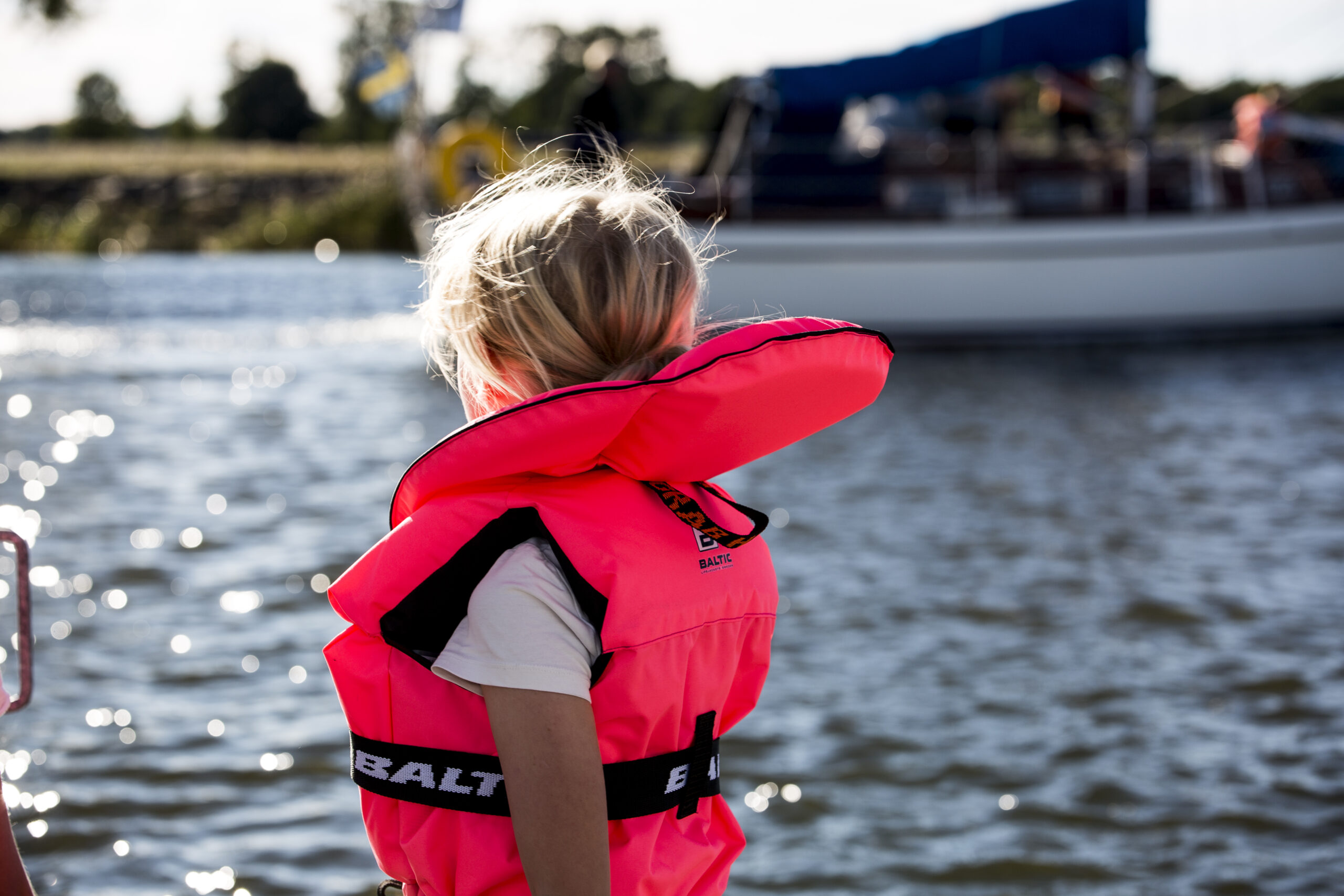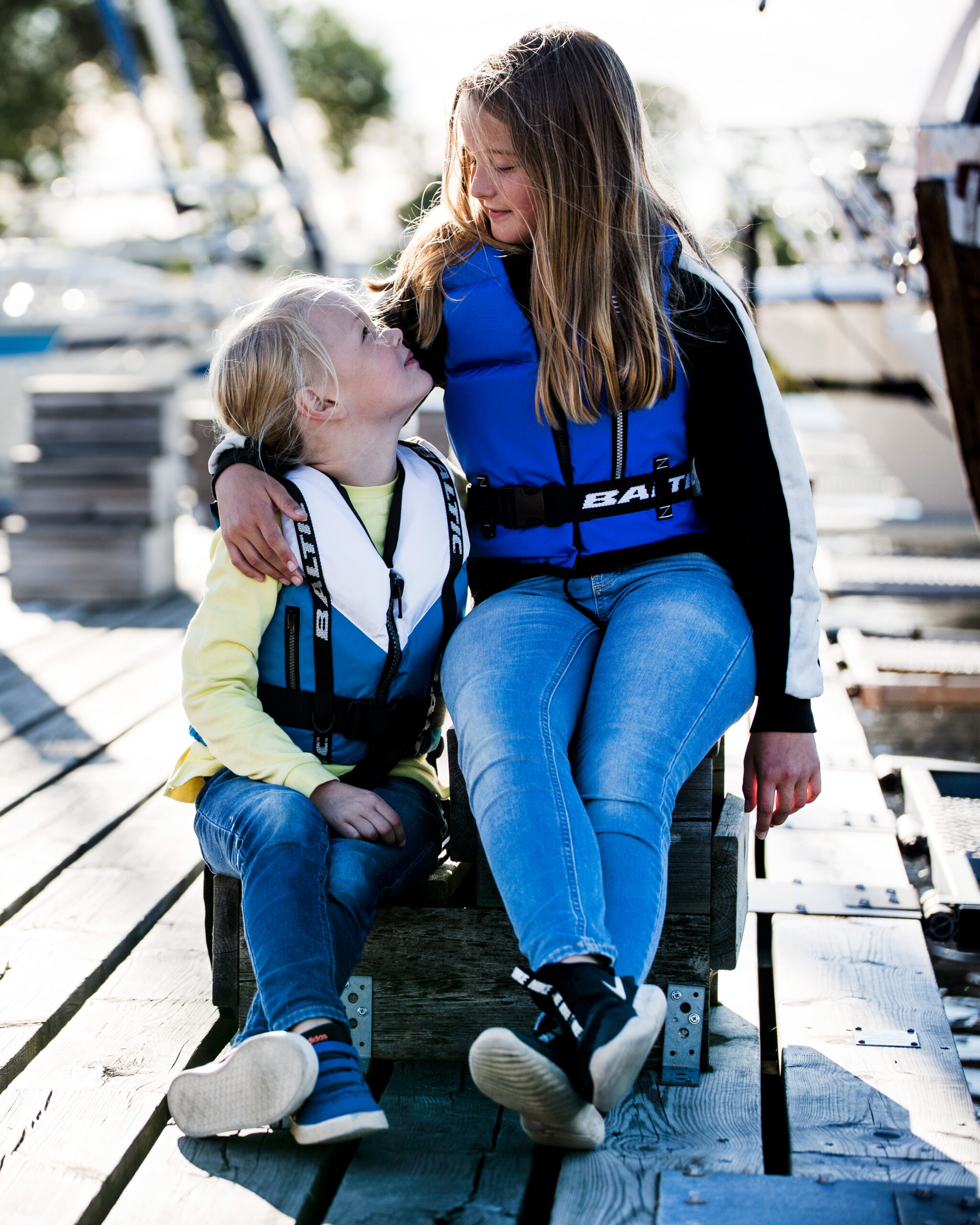
Choose the Right Fit for Your Child’s Lifejacket
For the lifejacket to work optimally, it needs to fit closely around the body. A jacket that is too loose can ride up in the water, especially if the crotch strap is not used. The right fit is crucial for the lifejacket to keep your child safe and afloat.
Refer to the manufacturer’s size guide, but always try the jacket on your child and check that it doesn’t ride up over their ears when you pull on the shoulder straps. Also, look for reflective details and bright colors that make your child visible in the water. Adjustable straps and soft materials ensure the jacket fits comfortably, even during play or longer periods in the boat.
Different Types of Child Lifejackets and buoyancy aids
There are different types of lifejackets and buoyancy aids depending on your child’s age and intended use. A lifejacket designed for rescue is equipped with a collar that helps turn the child onto their back with their face above the water. This makes it an excellent choice for younger children or those who cannot swim, as it provides extra safety in emergency situations. To meet safety standards, these lifejackets must also be made in a highly visible colour and feature reflective patches – important details that make it easier to spot the child in the water, even in poor visibility.
A buoyancy aid, sometimes called a sailing or activity vest, is a flotation device without a collar. These vests are better suited for children who can swim and are comfortable in the water. They are ideal for activities such as sailing or watersports. However, they do not help the child turn onto their back in the water, but rather provide support while the child is active.
Always consider your child’s swimming ability and how the vest will be used when choosing the right model.
Frequently Asked Questions About Child Lifejackets
How do I know if the lifejacket fits?
Try the jacket on your child – it should fit closely without riding up when you lift the shoulder straps. The crotch strap should always be used. Weight recommendations can be helpful, but the fit is the most important factor.
When should we replace the lifejacket?
As soon as the jacket no longer fits properly. Children grow quickly, so it’s important to regularly check the fit, not just the weight.
What’s the difference between a lifejacket and a buoyancy aid?
A lifejacket is equipped with a collar and is designed to help the child roll onto their back with their face upwards in the water. This makes it an ideal choice for younger children or those who cannot swim, offering extra safety in emergency situations. To meet safety standards, lifejackets must also be made in a highly visible colour and feature reflective patches – important details that make it easier to spot the child in the water, even in poor visibility.
A buoyancy aid, such as a sailing or activity vest, does not have a collar. These vests are better suited for children who can swim and are water-confident. They are great for activities like sailing or other water sports. However, they do not assist the child in rolling onto their back if they fall into the water, but they provide support while the child is active in the water.
Consider your child’s swimming abilities and how the vest will be used to choose the right model.

When is my child old enough to use an inflatable lifejacket?
Your child should be old enough to understand and handle the safety features of an inflatable lifejacket, such as not pulling on the cords, and not unscrewing the CO2 cartridge or the inflator. Additionally, your child should be water-confident, meaning they understand what happens if they fall into the water. As a parent, you know your child best, so please consider carefully before making your decision.
How do I know the lifejacket is working properly?
Make sure the buckles and zippers are intact and the jacket has no visible damage. It’s a good idea to test the jacket in shallow water at the start of the season.
Can my child wear a lifejacket over a jacket or Flotation suit?
We recommend trying the lifejacket both with and without a jacket before purchasing, to ensure it fits correctly. Always make sure the lifejacket is worn on the outside so it stays visible, and to ensure that an inflatable lifejacket can fully inflate and isn’t blocked.
Which type of lifejacket or buoyancy aid is best for boat trips?
It depends on your child’s age and swimming ability. For younger children, a lifejacket with a collar and crotch straps is best, as it helps the child’s head stay above the water. For older, swimming children, a more flexible jacket may work, as long as it has a good fit and is approved for use on the water.